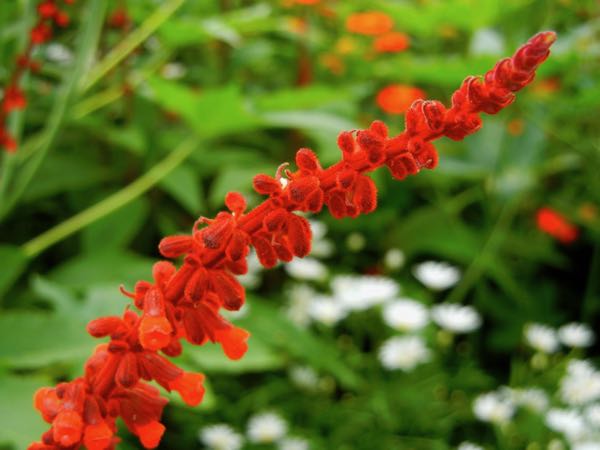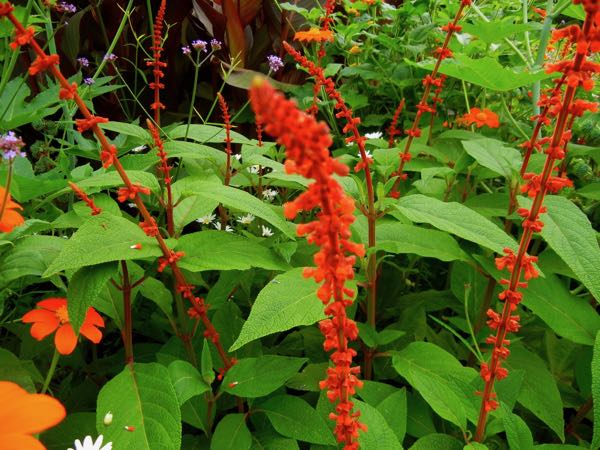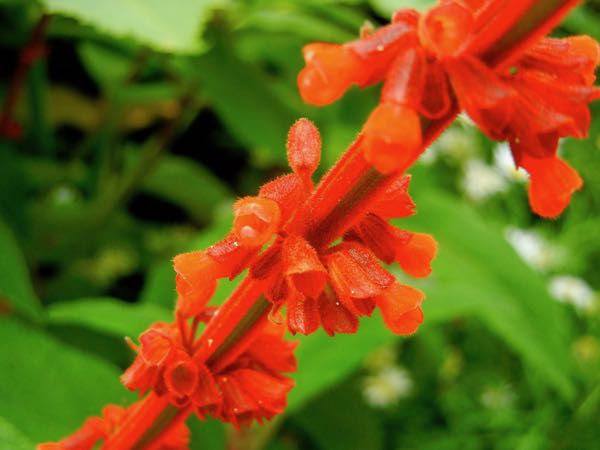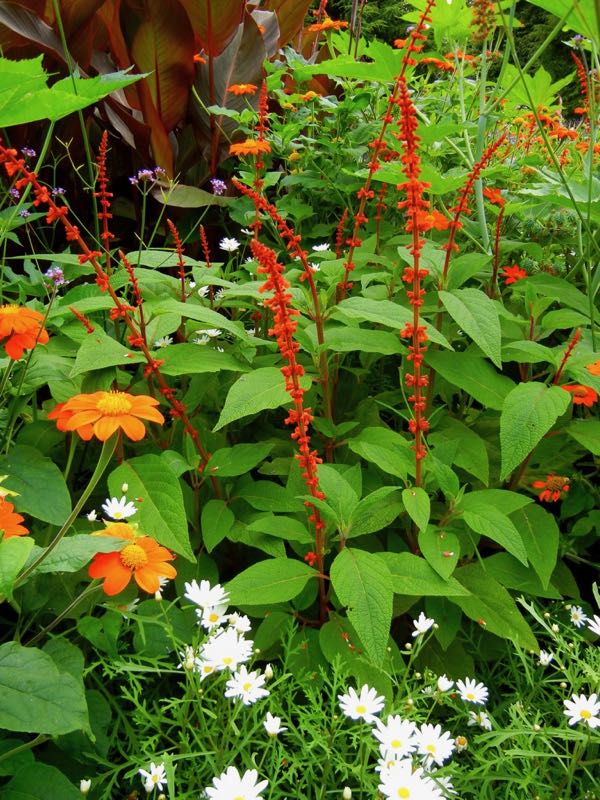Salvia confertiflora: The Majestic Sabra Spike Sage
Salvia confertiflora, commonly known as Sabra Spike Sage, belongs to the Lamiaceae family of plants. This captivating species originates from Brazil, where it thrives in its native habitat.
Discovery and First Publication
Salvia confertiflora was initially discovered and introduced to horticulture, although specific details regarding its first publication or discovery remain limited. Its striking features and ornamental value quickly caught the attention of garden enthusiasts and botanists alike.
Characteristics and Description
Salvia confertiflora is a tender perennial with a woody base, making it more resilient and long-lasting. The foliage of this species is ovate, showcasing a deep green hue. The leaves are imbued with a fragrant sage-like scent and feature serrated edges and velvety hairs. During the summer and autumn seasons, Salvia confertiflora produces tall red-brown spikes that can reach heights of up to 2 feet or 60 centimeters. These spikes are adorned with small red flowers, adding a vibrant splash of color to any garden. Deadheading the flowers encourages a prolonged flowering season, allowing you to enjoy their beauty for an extended period.
Fragrance and Flowering Season
The leaves of Salvia confertiflora emit a delightful sage-like fragrance, enriching the sensory experience in your garden. The flowering season of this species occurs during summer and autumn, offering a stunning display of vibrant red blooms.
Cultivation of Salvia confertiflora:
To cultivate Salvia confertiflora successfully and promote its optimal growth, it is crucial to consider the following cultivation requirements:
Sunlight: This species thrives when exposed to full sun. However, it is important to protect it from intense, direct sunlight. Providing it with ample light while sheltering it from scorching rays ensures its healthy development.
Watering: Maintain regular watering, especially during the first year after planting. Deeply water the plant once a week, or adjust the frequency to accommodate hot and dry weather conditions. Allow the top inch of soil to dry out between waterings to prevent overwatering and root rot.
Soil: Salvia confertiflora prefers humus-rich, moist soil that is well-drained. Ensuring the soil retains adequate moisture without becoming waterlogged promotes healthy growth and development.
Pests and Diseases: Keep a vigilant eye for potential pests and diseases that may affect the plant’s well-being. Common pests include slugs, snails, capsid bugs, rosemary beetles, and leafhoppers. Be proactive in monitoring and addressing pest issues promptly. Salvia confertiflora‘s vibrant flowers attract bees and other pollinators, contributing to a thriving ecosystem.
Propagation: Salvia confertiflora can be propagated through different methods, including seed sowing, softwood cuttings in spring, or semi-ripe cuttings in autumn. Each propagation method requires specific techniques and conditions, so choose the most suitable approach based on your resources and expertise.
Additional Tips:
Planting: Select a suitable planting time in either spring or fall, following the last frost. This ensures the plant’s establishment and minimizes the risk of cold damage.
Fertilizer: Apply a balanced fertilizer once a month during the spring and summer seasons. Choose a fertilizer specifically formulated for flowering plants to provide the necessary nutrients for robust growth and abundant blooms.
Pruning: Prune Salvia confertiflora in the spring after flowering. Remove any dead, damaged, or diseased stems. Thinning out the plant enhances air circulation, reducing the risk of fungal diseases and promoting overall plant health.
Winter Protection:
In colder climates, consider providing winter protection for Salvia confertiflora. This may involve bringing the plant indoors during the winter or covering it with a burlap sack or other protective material to shield it from freezing temperatures.
By following these cultivation guidelines and promptly addressing any challenges that may arise, you can enjoy the majestic beauty of Salvia confertiflora in your garden or landscape. Its stunning red spikes, fragrant foliage, and overall resilience make it a valuable addition for both experienced and aspiring gardeners.







